Pamukkale in Turkey's Aegean area is one of the most visited tourist attractions in the country. When considering a trip to Pamukkale, many visitors typically envision white travertine pools with turquoise water and perhaps Cleopatra's Pool. However, the UNESCO World Heritage Site of Hierapolis-Pamukkale is actually composed of the remains of the ancient city Hierapolis, found on a travertine geological formation. If you are planning on visiting Hierapolis-Pamukkale, it is important to remember that there is more to see than just travertine terraces. So my guide on how to visit the area could be useful when you plan your itinerary.
What is Pamukkale and Hierapolis
Pamukkale is situated 20 kilometres from the town of Denizli. Its calcium oxide-rich waters have been flowing down the southern slope of Caldag Mountain for thousands of years, resulting in deposits of white travertine on the plateau. The area has a long history, with the ancient city of Hierapolis being founded around the 3rd century BC by King Eumenes II of Pergamon. Since then, the hot springs of Hierapolis have been used as a spa, attracting people to the city to relieve their ailments. Following an earthquake in 1334, the city was abandoned, leaving behind ruins, including a necropolis filled with sarcophagi.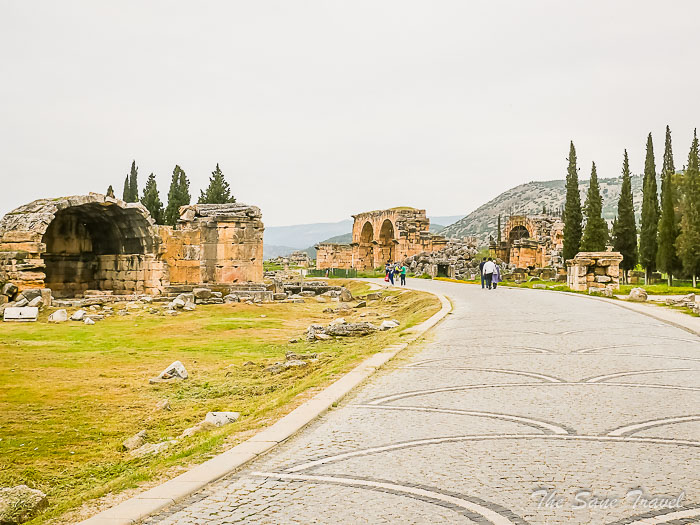
How to plan your visit
I visited Pamukkale as a part of my Turkey trip between Selcuk (Ephes) and Antalya. I arrived at Denizli, the closest city to Pamukkale, by train from Selcuk a little before noon. At the bus station, I took a minibus to Pamukkale.
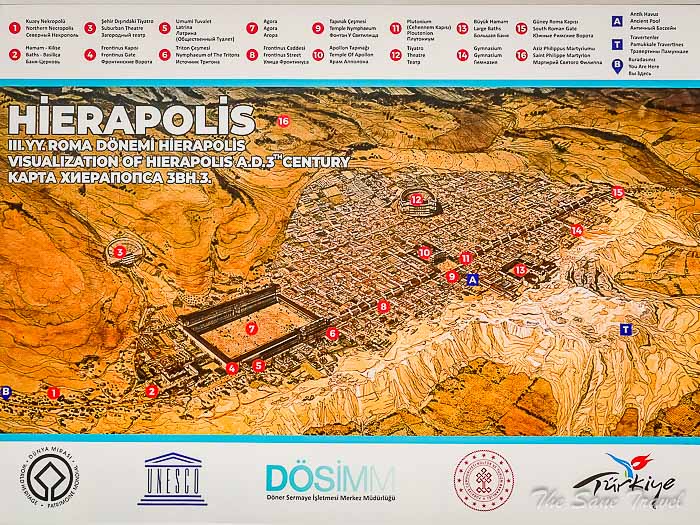
Main sights of Hierapolis-Pamukkale
Necropolis
The Necropolis of Hierapolis spans two kilometres and is one of the tidiest in Turkey. It is estimated to contain around 1,200 tombs made of limestone, with some dating back to the Hellenic period. In addition, there are also several Roman and Christian tombs. Hierapolis was historically renowned for its healing capabilities, although the numerous graves in the Necropolis suggest that not all cases had positive results. The graves were designed to reflect the status and prominence of those buried there, with designs ranging from simple tombs to sarcophagi, circular Tumuli, and family graves.
Frontinus Gate
Julius Frontinus, Proconsul of Asia Minor, had the Frontinus Gate built during 84–86 AD. It served as an impressive entrance to the Roman city, featuring three openings and two round towers, one of which is still in good condition. The gate opens onto a 14-metre wide plateia which spans the entire settlement.
Nymphaeum
The Nymphaeum was a shrine of the nymphs, a fountain which distributed water to houses throughout the city using a network of pipes. It was designed in a U-shape, with statues and shops around it. Today, only two side walls remain.
North Byzantine Gate
The monumental Northern Byzantine Gate was built in the late 4th century AD. This gate formed part of the fortification system and the entrance to the Byzantine city. Flanked by two square towers, it was built of reused material from the demolition of the Agora.
Temple of Apollo
The Temple of Apollo was located on the main street between the theatre and the sacred pool. After the original Temple of Apollo was reduced to its foundations, a new structure was built in the 3rd century in a Roman style, using marble recycled from the earlier temple. Only the foundations of the second temple remain today. The temple was fenced and not very well visible when I visited Hierapolis.
Plutonium
The Plutonium, situated next to the Temple of Apollo, is the oldest surviving local sanctuary. It is a small cave, big enough for one person, and features a set of stairs leading downwards. Underground geological activity in the cave produces toxic carbon dioxide and hot water with a powerful odour. People have died due to the dangerous gas, prompting a belief that it was sent by the god of the underworld. Replicas of the statues were recreated using laser scanning and 3D printing technology.
Roman Theatre
The Hierapolis Archaeological Site is home to the impressive Roman Theatre carved into the hills surrounding the area.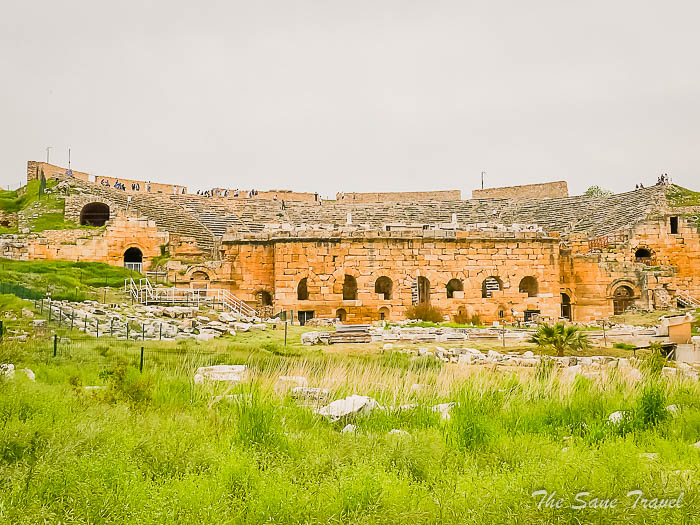
Hierapolis Archaeology Museum
The antique city of Hierapolis had an enormous Roman bath complex, including a library and gymnasium, which has survived to the present day. Since 1984, the city's Great Baths have housed the Hierapolis Archaeology Museum. Works of art and artefacts from the excavations at Hierapolis are on display alongside finds from other towns of the Lycus Valley. The museum consists of several sections, including the Statues and Sarcophagi Gallery, Small Artefacts Gallery, Theatre Ruins Gallery, and a garden section. Statues, gravestones, pedestals, pillars, idols, and earthen cups are some of the artefacts exhibited at the museum.
Antique Pool
The Antique Pool, or Cleopatra's Antique Pool, has hot spring waters with healing qualities, ranging in temperature from 36–57 degrees Celsius. 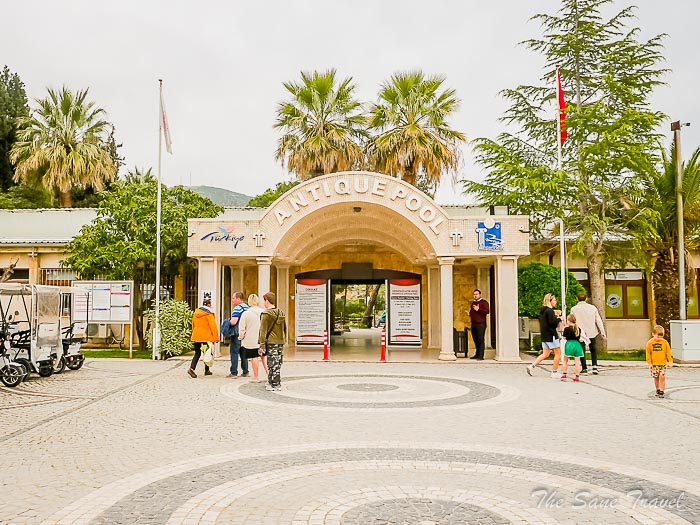
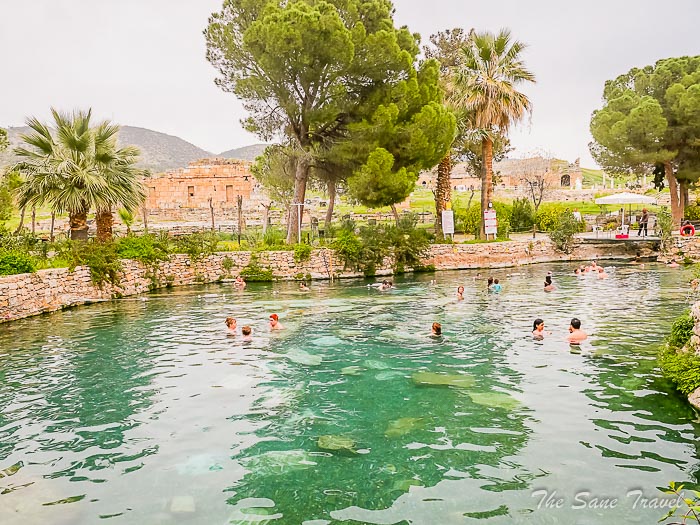
Rooster statue
The rooster statue is located in front of the Antique Pool.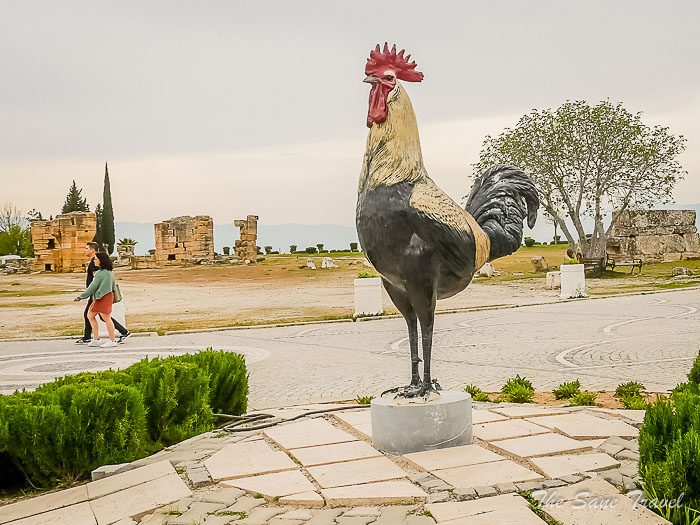
Travertine terraces
Earthquakes and the movement of tectonic plates in the area have caused the formation of these striking rock formations, and thermal waters, rich in minerals, have been brought to the surface. These mineralised waters have generated a series of petrified waterfalls, stalactites, and pools with step-like terraces, some of which are less than a metre in height, while others are as high as six metres. 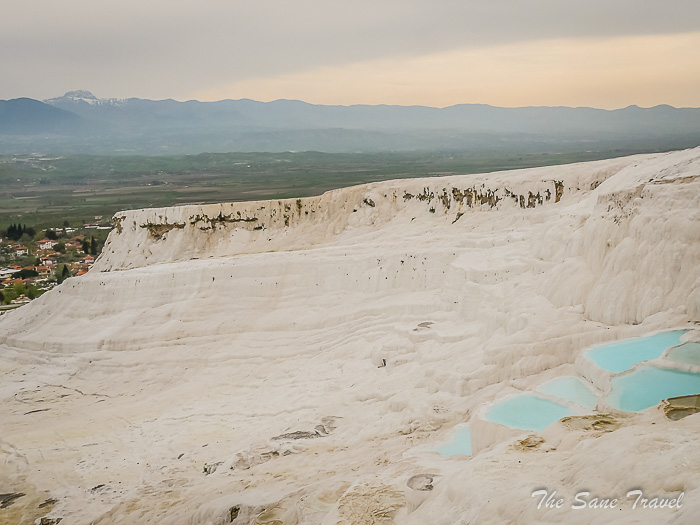
Practical tips
The entrance fee to Hierapolis and Travertines of Pamukkale is 400 Turkish Lira or 16 euros. The fee also covers a visit to the Archaeology Museum. You do not have to pay extra to walk around the Antique Pool, but if you want to swim, you need to buy a separate ticket. Do not forget to bring your swimming suit and towel. Many people visit the site as part of a tour group, arriving around midday and staying until the evening. To make your visit more enjoyable, I recommend starting your trip at the less-visited north gate. Also, you cannot wear shoes on the white cliffs, so make sure you have a bag to store them while walking up and down the terraces.
Like it? Pin it!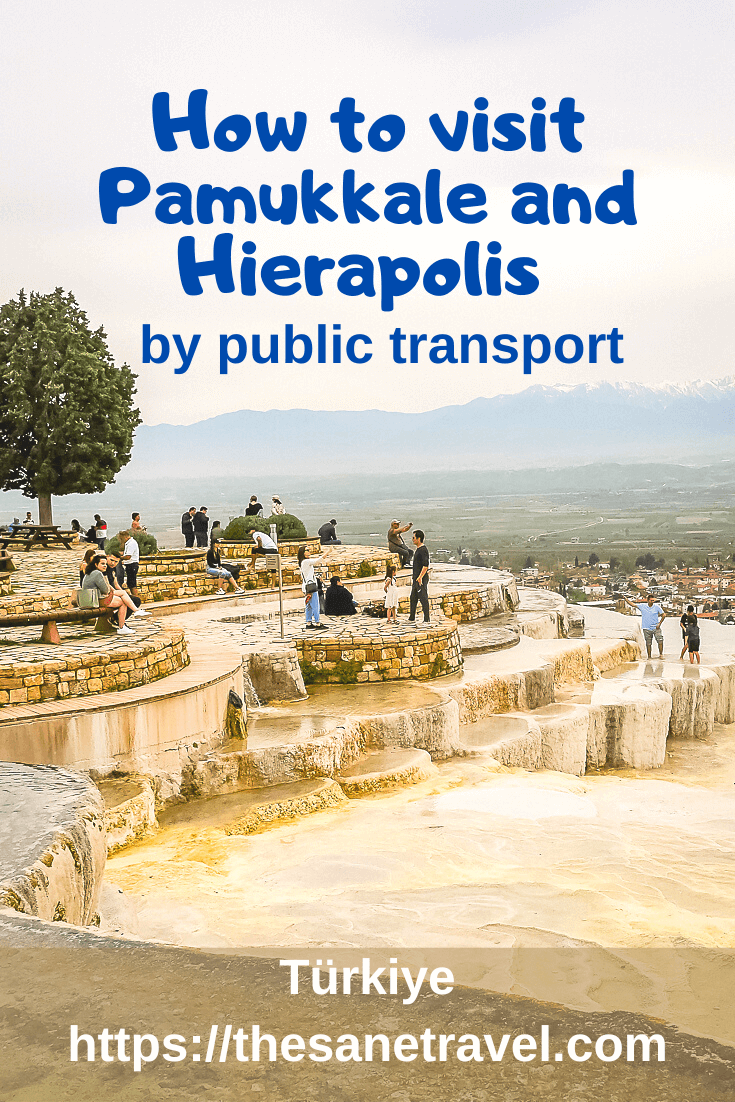
What did you think? Have you visited Pamukkale and Hierapolis? I would love to hear from you, so please add your comment below.
Author: Anita Sane

About the author
Anita is a part-time traveller, passionate photographer and a retired career woman from Latvia, travelling mostly solo for more than 15 years. She is a skilled travel planner who plans and executes her travels by herself. Anita wants to show you how to travel the world and open your mind to new experiences. Follow her on Facebook, Instagram, Pinterest, Twitter and Bloglovin.

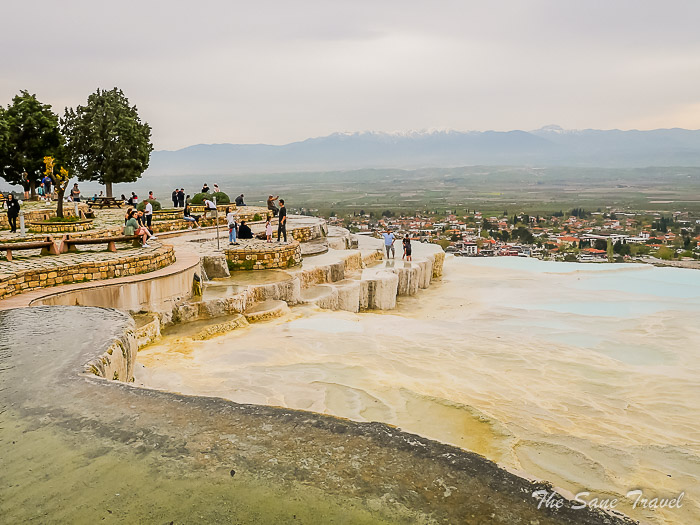
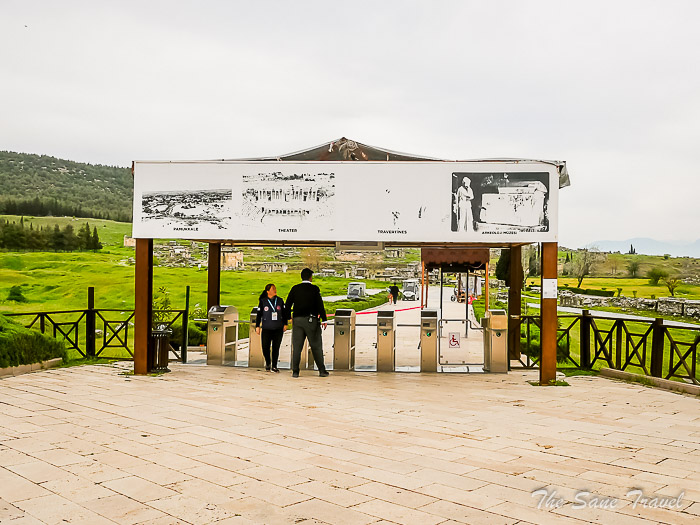
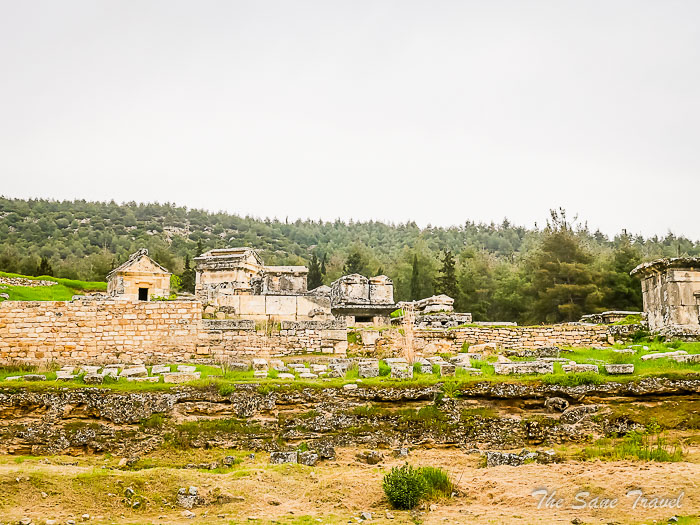
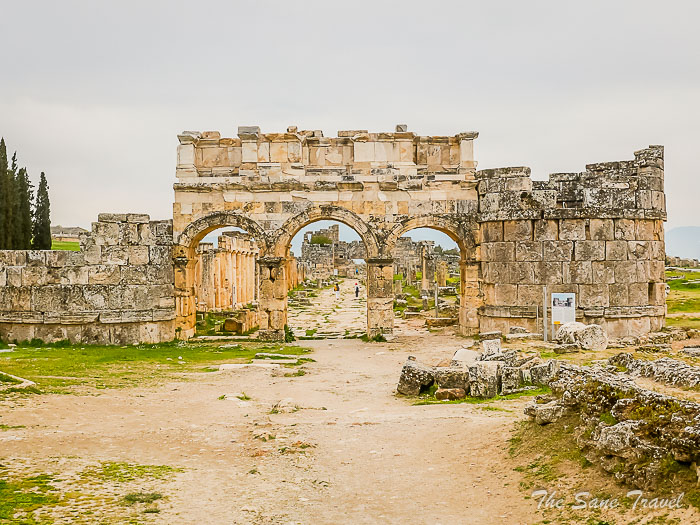
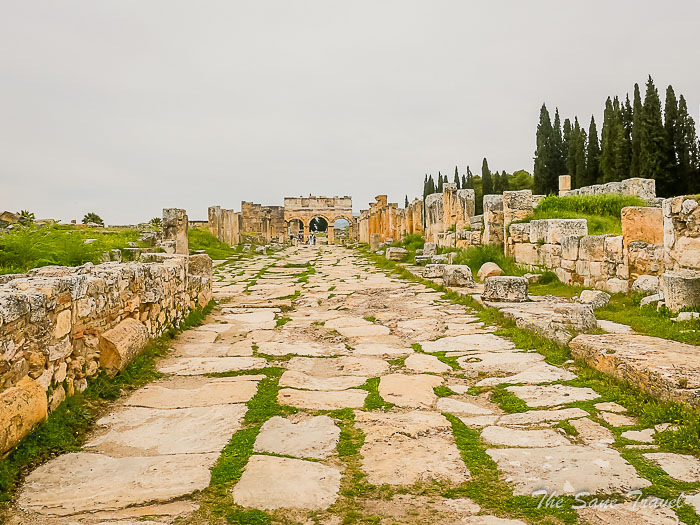
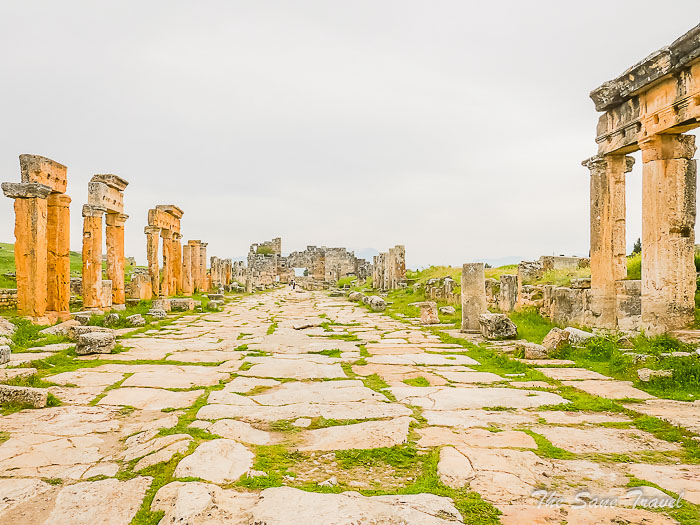
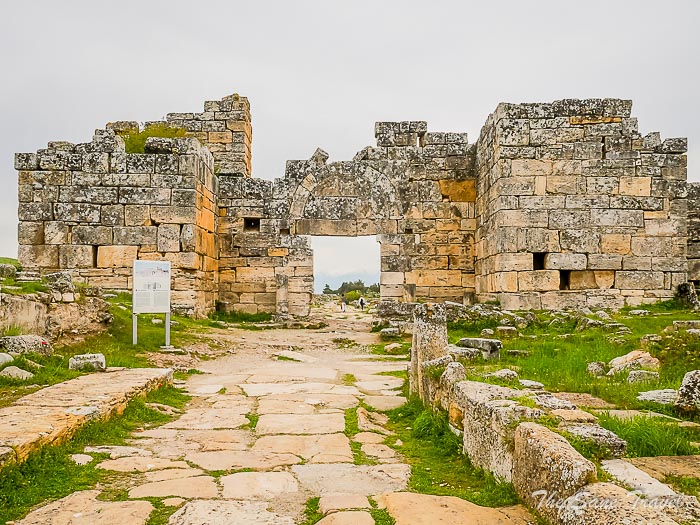
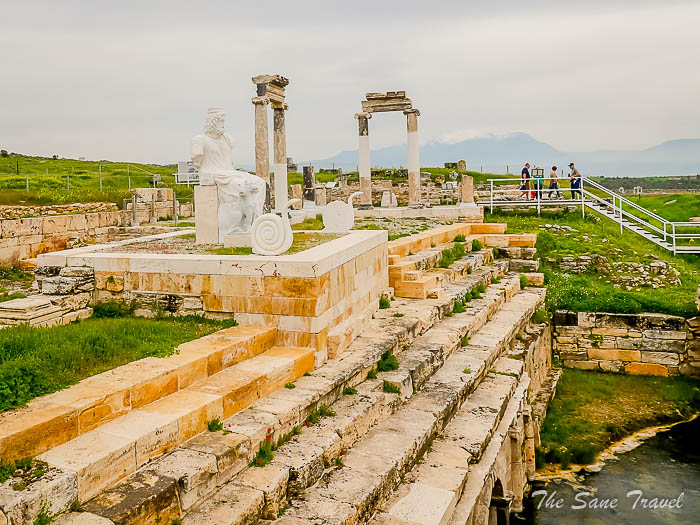

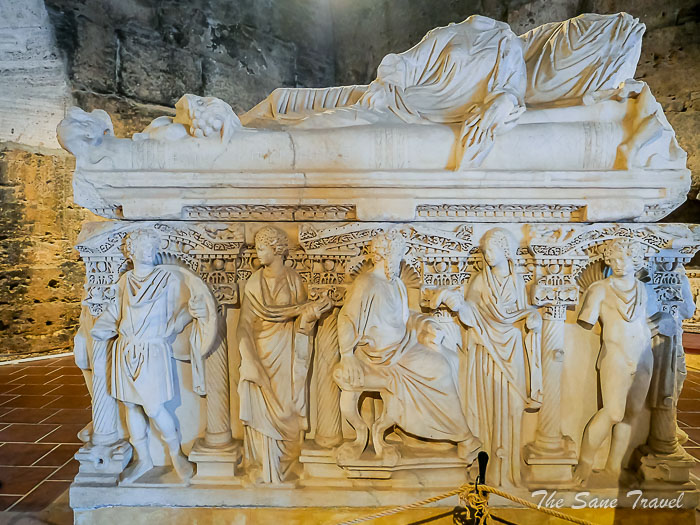
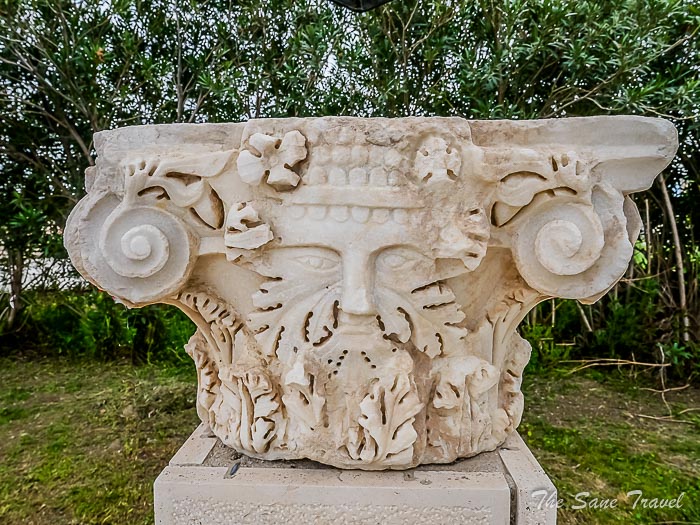
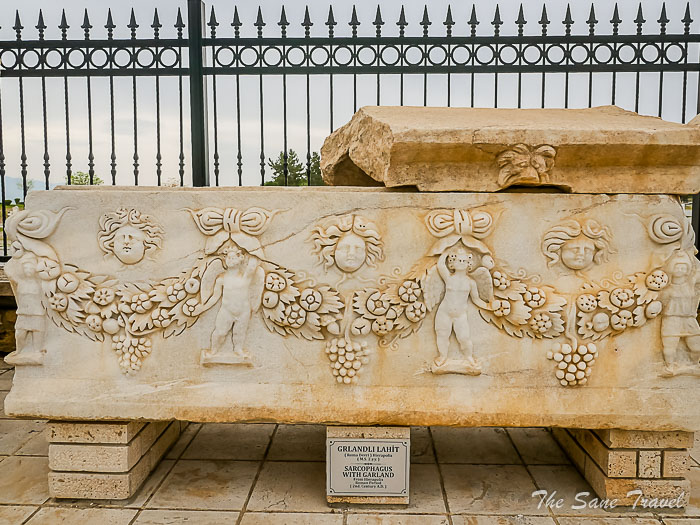
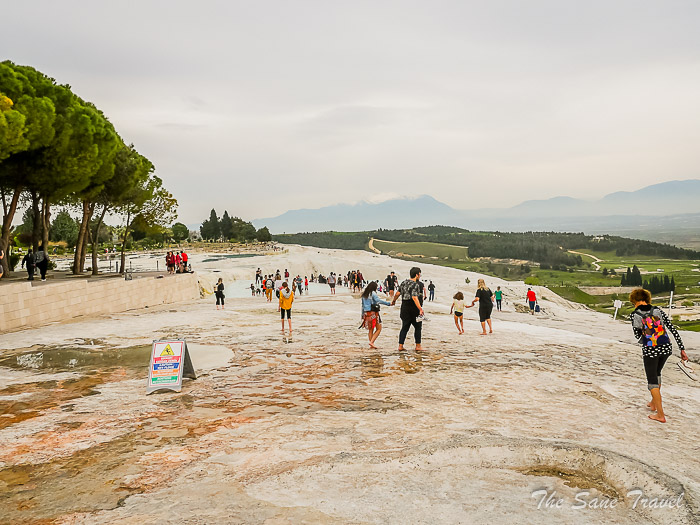
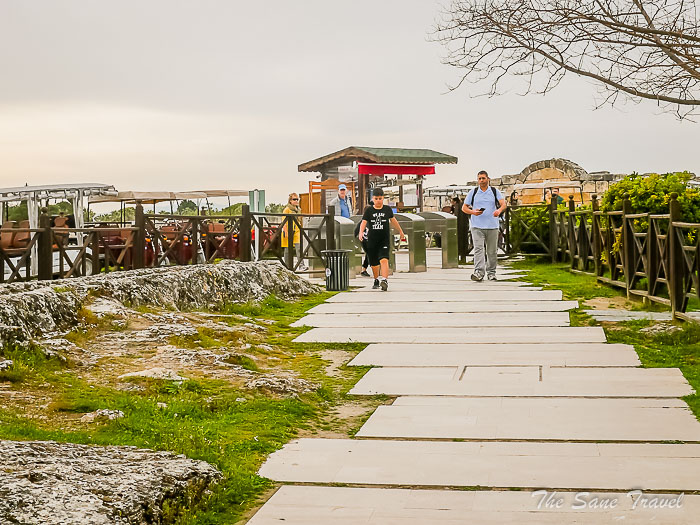
Report
My comments